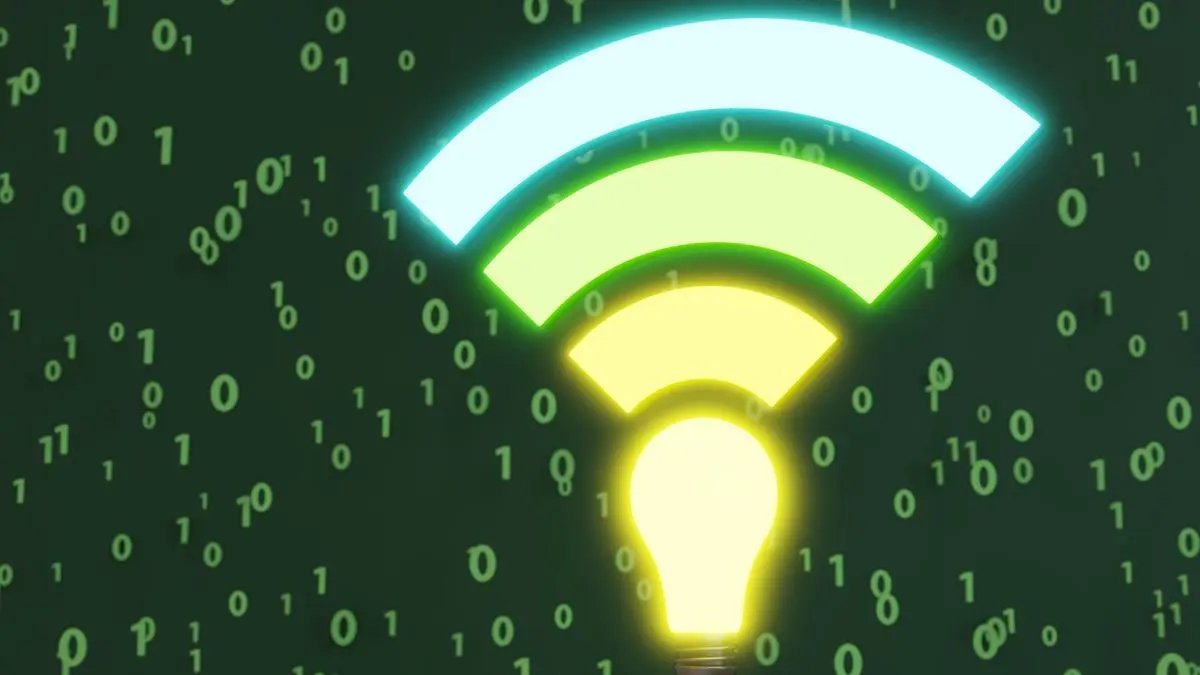The Wi-Fi we use today is based on radio waves, which is a long wavelength, low-frequency electromagnetic radiation. Instead of radio waves, can we use light, which is also electromagnetic radiation but of higher frequency? After all, higher frequency implies higher data rates, so “Li-Fi” should be better than Wi-Fi, right?
Yes, say scientists. Research is on to bring in light-fidelity or Li-Fi to replace Wi-Fi. IIT-Delhi’s Prof Abhishek Dixit is working on ‘visible light communication’ (VLC). He says that the modest LED (light emitting diode) lamp found in most houses today can be used to transfer data via light by electrically switching it on and off to arrive at combinations of 1s and 0s (1 is presence and 0, absence of light).
One of the challenges in using the visible range is the directional nature of light. Unlike in the case of radio frequency signals, which spread out, in the case of light the user should have an ‘optimum field of view in the coverage area of the light source’ to receive the signal. To address this shortcoming, Prof Dixit’s team has designed optics that spread the light in an optimal way, aiming for uniform distribution and minimal interference between multiple LEDs within a room. The team has applied for a patent for this design.
To overcome the challenge of limited bandwidth in visible light LEDs, compared with infrared diodes, Dixit has developed ‘equalisation’ circuits to significantly increase the bandwidth of LEDs (say, from 3 to 80 MHz).
What is equalisation? Much like the wind interferes with how far your voice can travel in the open, in telecom the communication channel can distort signals. Equalisation helps undo the distortion.
The team is also exploring higher-order modulation to achieve bigger data rates over limited bandwidth. It is also working to develop a Li-Fi network, whereby users can maintain Internet connectivity even while moving within a room.
Li-Fi vs Wi-Fi
VLC currently offers data rates of 200-400 Mbps per access point. Infrared LED-based solutions can go up to 1-2 Gbps.
The visible light LED-based solutions can also go up to a range of 1 Gbps but “our current set-ups are targeting 200 Mbps”, says Prof Dixit. However, it must be noted that achieving high data rates via visible light LED is more difficult compared with IR LED-based solutions.
While a single Wi-Fi access point may offer high bandwidth (say 1 Gbps), this is shared among all connected devices, potentially reducing speeds for individual users.
So, if a single room has 10-20 Li-Fi access points and a single Wi-Fi access point, the available bandwidth per room for Li-Fi is 10-20 Gbps or higher, while for Wi-Fi it would be 1 Gbps.
A changeover from Wi-Fi to Li-Fi would necessitate rewiring existing LED lamps in the house or a user-cluster in a setting such as a hotel to connect to the Internet. You would also need a receiver, likely a dongle with a photodiode, to convert light signals back into electrical signals for devices like mobile phones or laptops.
The existing LED lamps in a home could be used for both illumination and communication, and hence Li-Fi is an energy-efficient solution.
Prof Abhijit Mitra of IIIT-Delhi says LEDs work as transmitters while photodetectors (sensors that detect and convert light into electrical signals) can function as ‘receivers’.
Mitra and his team are working on switching speeds of LEDs. Despite the large bandwidth available, the bottleneck would be the speeds at which LEDs can be turned on and off. For digital communication, fast switching is crucial to transmit data at high rates. Each on-off cycle can represent a bit of information.
He says conventional LEDs can achieve switching speeds of a few megabits per second, but that is not enough for high-bandwidth applications like downloading a 10-GB movie or real-time high-definition video streaming (requiring around 100 Mbps).
To increase the data rate, advanced modulation techniques help. “Instead of just switching the LED fully on or off to represent one bit per cycle, these techniques involve sending one ‘symbol’ per second, where each symbol can encode multiple bits of information,” he says. Pulse amplitude modulation (PAM) is one such technique, where multiple levels of voltage (and thus light intensity) are used to represent different combinations of bits.
There are some obvious advantages with Li-Fi. Light cannot penetrate walls and is hence secure from ‘eavesdropping; Wi-Fi and cellular use radio frequency, which can pass through walls.
Additionally, light spectrum is free to use currently, making it cheaper.
Mitra’s research interest includes the use of solar panels as communication receivers.
With rooftop solar finding more takers today, it could help accelerate the rollout of Li-Fi technology. “Solar panels are sensitive to light, which can be used to detect the rapid switching of a light signal carrying information.”
Apart from doing away with the need for a separate photodetector, solar panels lend themselves to long-distance communication as well. For receiving information (downlink): Information could be relayed from a base station (possibly via free space optics, or FSO links — a point-to-point light-based communication) to a rooftop solar panel equipped with a ‘bandwidth enhancement circuit’ (a small piece of hardware that can detect changes in light intensity). The data received by the solar panel would then be routed through in-home networks (like Ethernet and Wi-Fi) to the user’s device.
More Like This
Published on April 6, 2025
